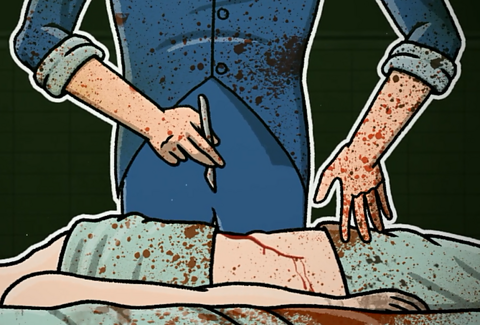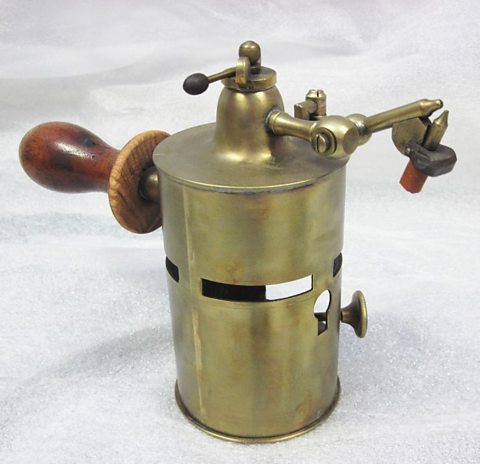Joseph Lister is known as the 'father of modern surgery'
Find out how his ideas about cleanliness and sterilisation made medical operations safer.
Find out about the life of Joseph Lister


Who was he?
- Lister was born in England on 5 April 1827.
- His father taught him how to use a microscope
- By the age of 16 he wanted to be a surgeon.
- Lister was shocked that half of patients died after surgery.
- He learned about invisible germs from French chemist Louis Pasteur's work on rotten food
- Lister began experimenting with chemicals to clean patients' wounds.
- Cleaning wounds and surgical instruments with antiseptic made the survival rate higher.
- Lister published his discovery and began persuading others to use the same methods.
- Joseph Lister died in England on 10 February 1912 aged 87.



Surgery before Lister
Surgery was very dangerous and the high death rate made many people suggest it should be stopped.
Patients often died from 'ward fever' caused by infections after surgery.
People thought ward fever was caused by bad air escaping wounds
Surgeons wore their bloody and unwashed medical clothes as a badge of honour to show their experience.
Medical instruments were rarely cleaned and staff never washed their hands.


Lister's carbolic acid steam spray was used to kill germs ©The Hunterian, University of Glasgow.
Lister's experiments
- Lister thought germs caused infection
- He soaked bandages in carbolic acid to keep wounds clean. It was normally used for cleaning sewers!
- Patients who would otherwise need limbs amputated due to infections, began to heal properly with Lister's new antiseptic treatment
- Lister decided that hands, clothes, surgical tools, and wounds should also be washed with this chemical.
- This led the way for other types of surgery due to less risk of infection.
- Lister even invented a carbolic acid spray machine to clear surgical theatres but breathing in acid was dangerous!

Lister's carbolic acid steam spray was used to kill germs ©The Hunterian, University of Glasgow.

Definitions
- Antiseptic prevents the growth of disease-causing bacteria (micro organisms).
- Carbolic Acid was first extracted from coal tar and used to treat wood because it stopped rot. Lister only ever used a 5% concentration with 95% water because it is very strong and can burn on contact with skin.
- Amputating an arm or leg was the main way of preventing infections spreading before Lister and this was often performed with no painkillers, and did not have a high survival rate.
More on Victorians
Find out more by working through a topic
- count7 of 19

- count8 of 19

- count9 of 19

- count10 of 19
